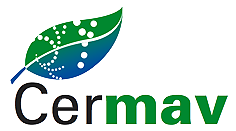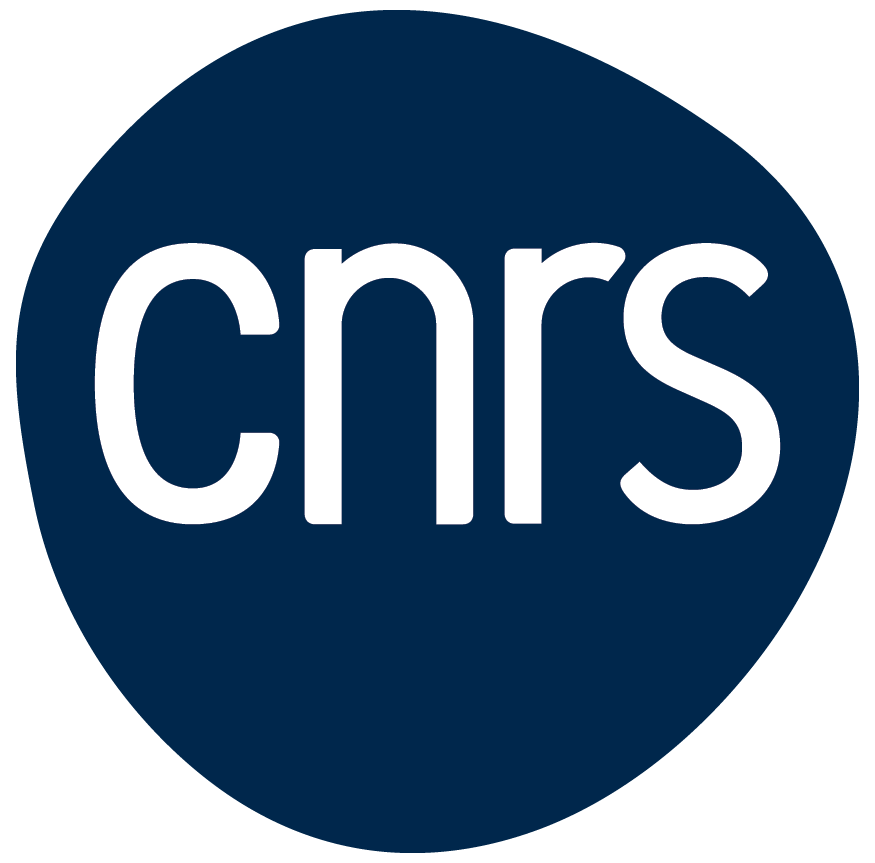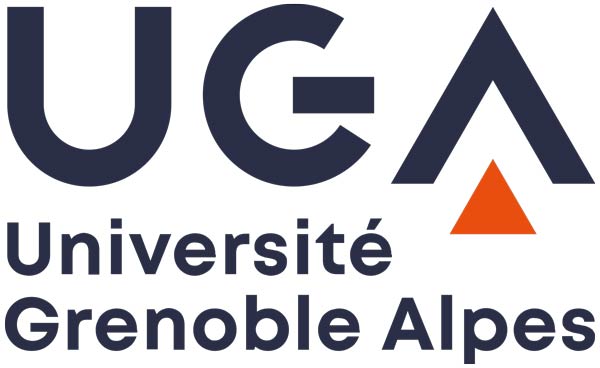Bernard Henrissat is elected member of the Academy of Sciences
At the end of the elections opened in 2023, the Academy of Sciences has just elected 18 new members, including our former colleague Bernard Henrissat in the “Chemical, biological and medical sciences, and their applications” division, chemistry section. CERMAV and the community are really proud of him ! Bernard Henrissat completed his doctorate thesis at Cermav. […]
Electrospun Cactus Mucilage/Poly(vinyl alcohol) Nanofibers as a Novel Wall Material for Dill Seed Essential Oil (Anethum graveolens L.) Encapsulation: Release and Antibacterial Activities
This study, a collaboration work with University of Sfax and Grenoble INP, aimed to create long-lasting molecular carriers by producing electrospun nanofibers from cactus mucilage and poly(vinyl alcohol) loaded with dill seed (Anethum graveolens L.) essential oil (DSEO). The electrospun nanofibers enabled controlled long-term release of DESO. The DSEO-containing nanofibers demonstrated bacteriostatic and bactericidal activities […]
Enantioselective membranes prepared by electrospinning of cellulose tris(3,5-dimethylphenyl carbamate) having various degrees of polymerization: effect of the DP on the morphology
Recently, we reported a proof of concept of enantioselective membrane filtration using a nonwoven membrane prepared by electrospinning of cellulose tris(3,5-dimethylphenyl carbamate) (CDMPC) synthesized from microcrystalline cellulose. In the present work, CDMPCs having higher degrees of polymerization were synthesized from cellulose fibers derived from hardwoods by a collaboration with Centre Technique du Papier granted by […]
Mini symposium Lyon : Glycomics and beyond….
Cermav will participate in the mini-symposium organized by Dr Petier Goekjan, on Friday December 8th, 2023 at the Batiment Lederer (ICBMS building, 1 rue Victor Grignard) on the Doua Campus, as part of the the ICL-funded visit of Prof. .Nicolas Pohl. Glycomics: Beyond the human glycome Program : Glycomics in Glycoscience will address some of the pending […]
Moustoifa Said thesis defense on March 21th, 2023
Abstract: “In regenerative medicine, the implantation of combined of cells and hydrogels is a promising strategy to improve cell therapy. However, it is crucial to monitor the in vivo fate of hydrogels and cells using non-invasive imaging tools, for optimizing their properties as well as for enabling translation into the clinic. In this context, we proposed […]
Structural Glycoscience Summer School 2023 in Grenoble (from June 5th to 7th, 2023)
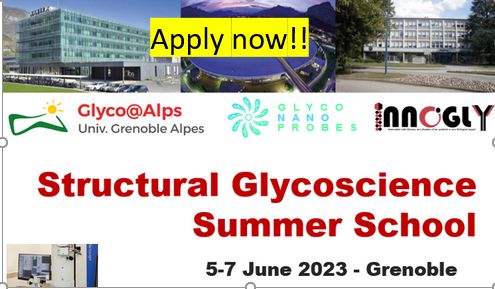
Register at https://glycoalps.univ-grenoble-alpes.fr/glyco-club/glyco-club-s-activities/structural-glycoscience-summer-school-2023-886248.kjsp
Design of hyaluronan-based dopant for conductive and resorbable PEDOT ink
Abstract “Conformable biocompatible conductive materials are increasingly sought for the development of bioelectronics. If additionally resorbable, they could serve for the design of transient implantable electronic devices, opening the way to new healthcare applications. Hyaluronan (HA) derivatives including sulfate and aminophenylboronic acid (PBA) groups (HAS-PBA) were therefore designed to serve as dopants of poly(3,4-ethylenedioxy)thiophene (PEDOT). […]
Biomass in the Bioeconomy
Abstract: “Biomass is the physical basis of the bioeconomy, the renewable segment of the circular economy, and as a CO2-neutral part of the carbon cycle, biomass is an efficient carbon sink. Demand for biomass is increasing worldwide because of its advantages in replacing fossil-based materials and fuels, which presents the challenge of reconciling this increased […]
Extending Janus lectins architecture: Characterization and application to protocells
Abstract: “Synthetic biology is a rapidly growing field with applications in biotechnology and biomedicine. Through various approaches, remarkable achievements, such as cell and tissue engineering, have been already accomplished. In synthetic glycobiology, the engineering of glycan binding proteins is being exploited for producing tools with precise topology and specificity. We developed the concept of engineered […]
Harnessing Biobased Materials in Photosynaptic Transistors with Multibit Data Storage and Panchromatic Photoresponses Extended to Near-Infrared Band
Abstract: “Owing to ever-increasing environmental impact, nature-inspired biomimetic electronics are key to unlock the potential of developing environmentally friendly brain-like computing and biomimetic artificial-intelligence systems. Thus far, the development of photosynaptic devices via green processing using biobased materials has become a major challenge, owing to restrictions in complex architecture, material design, and stimulation wavelength. This […]
Paul Rivollier thesis defense on February 28th, 2023
Summary : “Influenza viruses are responsible for human flu epidemics and pandemics causing hundreds of thousands of deaths each year, or sometimes long-term sequelae. The infectious process is based notably on two proteins, hemagglutinins and neuraminidases. The first allow the adhesion of the virus on the epithelial cells of the human respiratory system by the interaction […]
Supramolecular carbohydrate-based hydrogels from oxidative hydroxylation of amphiphilic β-C-glycosylbarbiturates and α-glucosidaseinduced hydrogelation
The team “Self-assembly of Glycopolymers” of CERMAV has developed a new family of sugar derivatives through an eco-responsible process which is able to self-assemble into hierarchical glyconanostructures to ultimately gel water and the gelation can be triggered by the action of a glycosidase. Click on the title for more information.
Helical inclusion complexes of amylose with aromatic compounds: Crystallographic evidence for new V-type allomorphs
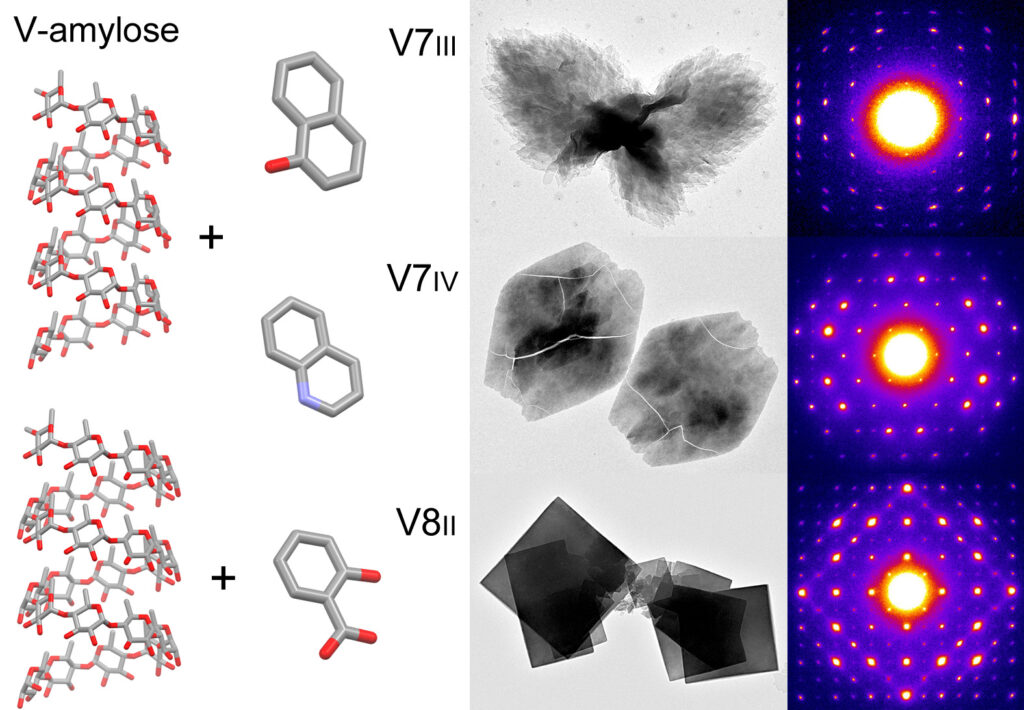
The morphology and crystal structure of three new inclusion complexes of amylose with small aromatic molecules were described, thus widening the family of V-amylose allomorphs that may form when starch is processed in the presence of various ingredients and additives.
Click on the title for more information.
Deciphering GAGs: a new way of sequencing polysaccharides

In this publication involving Bernard Priem, Lecturer at the University of Grenoble Alpes, the authors propose an effective and robust approach based on passage through protein nanopores, to decipher the structure of complex bioactive polysaccharides, GAGs. Click on the title for more information.
Malgorzata Sulewska thesis defense on January 13th, 2023
Malgorzata Sulewska completed her thesis at Cermav under the co-direction of Bernard Priem (Grenoble Alpes University) and Rita Gerardy-Schahn (Hannover Medical School). It is entitled “Biosynthesis, Depolymerization, Detection, and Analysis of Glycosaminoglycans with a Focus on Heparosan”.
François Bru thesis defense on January 20th, 2023
François Bru completed his thesis at Cermav under the supervision of Laurent Heux, CNRS Research Director, entitled “Hydrophobization of 100% cellulosic materials for single-use packaging”. He focuses on hydrophobization of cellulosic materials. Click on the title for more information.
Hijacking the Peptidoglycan Recycling Pathway of Escherichia coli to Produce Muropeptides
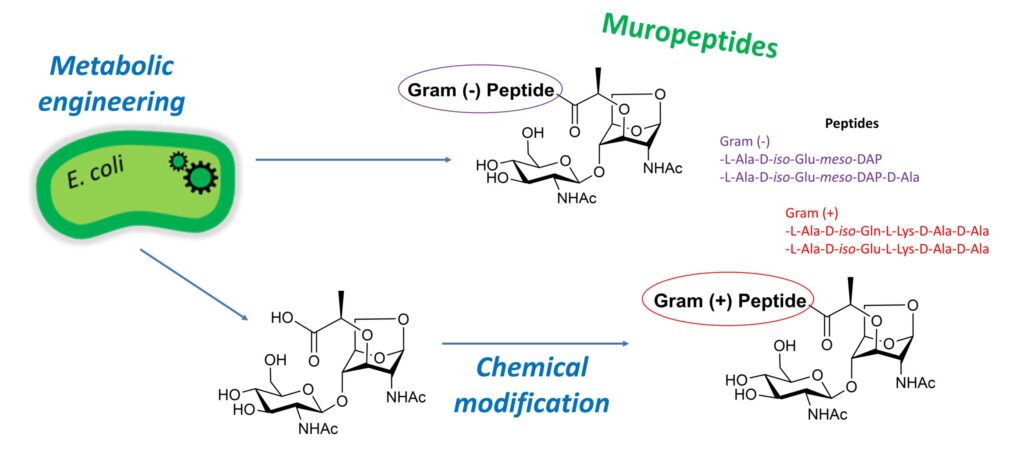
Muropeptides are short peptidoglycan fragments released from the cell wall of bacteria as part of their metabolism or as a result of biological stresses, in which they play a major role in the induction of antibiotic resistance. In order to better understand these processes, we developed a new synthetic approach which combines synthetic biology and glycochemistry to prepare Gram (–) and Gram (+) muropeptides. Click on the title for more information.
Hong LI thesis defense on December 06th, 2022
Hong LI completed his thesis at Cermav under the supervision of Redouane Borsali, CNRS Research Director. it is entitled “Self-assembly of carbohydrate-based brush-like block copolymers: colored biomaterials and photonic crystals”. Click on the title for more information.
Shun Yao thesis defense on November 16th, 2022
Shun Yao completed his thesis at Cermav under the supervision of Sami Halila, CNRS researcher. It is entitled “Syntheses, properties and applications of glyco-hydrogelators”. Click on the title for more information.
Biotechnological production of sialylated solid lipid microparticles as inhibitors of influenza A virus infection
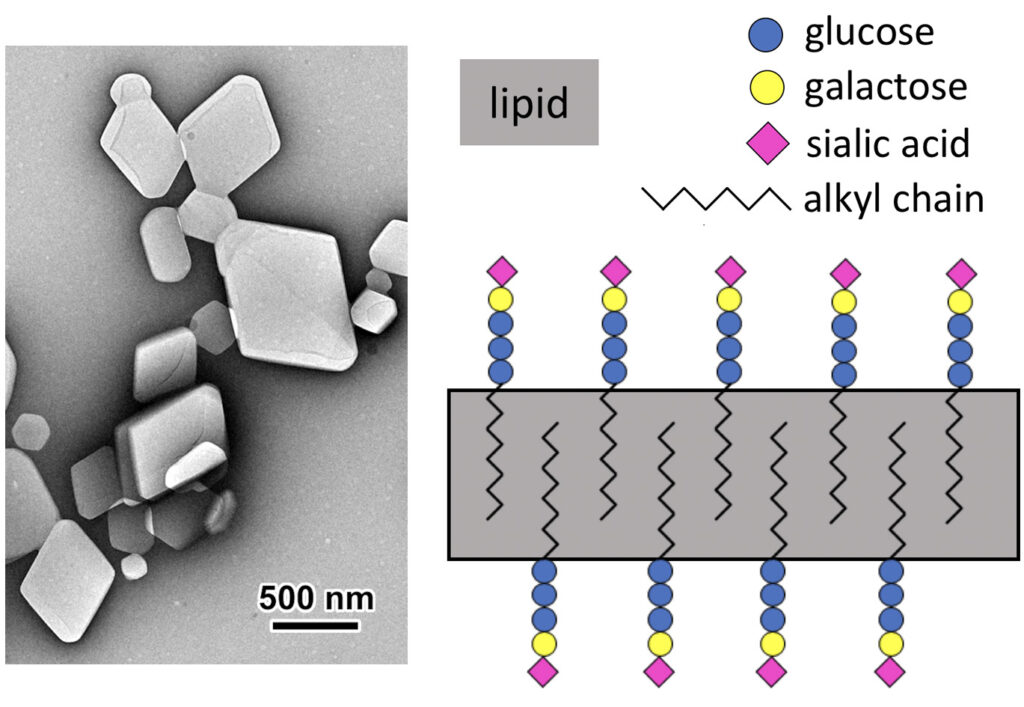
In this publication in collaboration with the CIRI – International Center for Research in Infectiology (UMR Université Lyon 1, Inserm, CNRS and ENS Lyon), we show a new biotechnological approach for the elaboration of sialylated microparticles, capable of luring Influenza viruses, responsible for human flu. Click on the title for more information.
